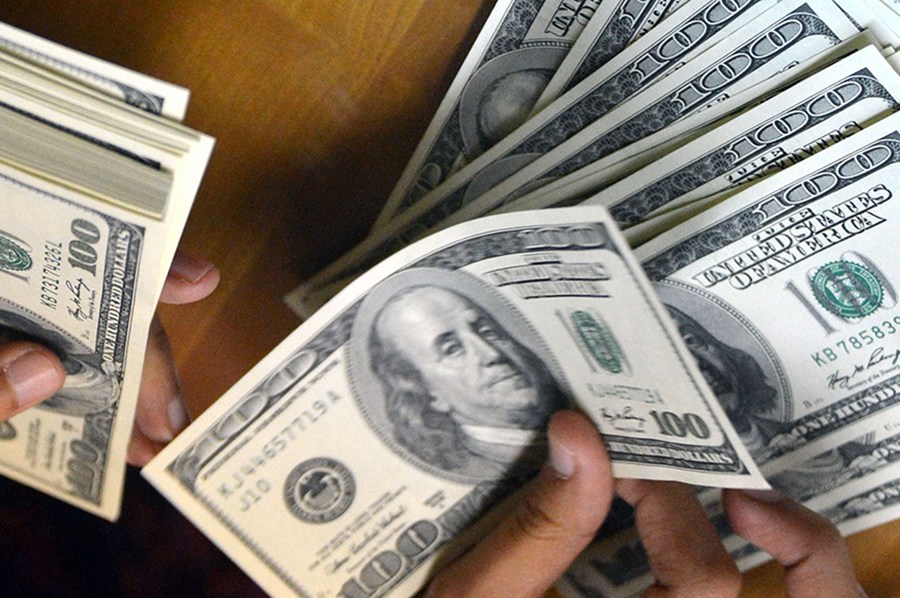RIO DE JANEIRO, BRAZIL – The dollar has been dropping sharply since Thursday as a result of the U.S. Federal Reserve president Jerome Powell’s announcement that the US central bank’s monetary policy will change.
Now the inflation target is no longer fixed, and the goal will be to reach an index that will remain at an average of two percent a year.
Since the address, the dollar dropped 3,51 percent, down from R$5,6124 to R$5,4156 (quote at the close on Friday, August 28th).
According to Bruno Lavieri, economist and partner of 4E Consulting, Powell’s statements will not make that much difference in the long term, but in fact, help to depreciate the US currency against other world currencies in a shorter time frame.

“Basically, what the Fed’s president advocates, is that it’s okay to have a little higher inflation than the target for a while, as long as it’s offset in the following years. The value of the currency will be reduced a little with this monetary policy flexibilization,” he explains.
Economists Xiao Cui and Jeremy Schwartz of Credit Suisse stress that the review of the Fed’s monetary policy began in 2019 and the new guidelines merely consolidate and formalize many of these innovations.
“A flexible rule will maximize the Fed’s discretionary power in the future. However, in practice, the details of an average inflation target would likely not make much difference to monetary policy outcomes,” the analysts write.
For Lavieri, looking at the real vs. the dollar scenario, the exchange rate depends more on how long it will take for the coronavirus pandemic to be overcome and on how the government will face the fiscal question, rather than on the Fed’s signals.
“Today the risks are asymmetrical in fiscal terms. Paulo Guedes is weakened and the plans coming from the government are to increase spending rather than containment. However, this news has already come out and the market has already priced it, so I no longer see such strong depreciation of the real,” he explains.
It should be noted that, in addition to the Fed, the National Monetary Council’s (CMN) authorization for the transfer of R$325 billion from the Central Bank to the National Treasury also contributed to the currency’s decline in this session, as it will help in public debt management at a time of a greater sense of caution amid fiscal risk.
Lavieri says that 4E’s projection is for the dollar to close 2020 costing R$4.80 with the pandemic contained or at least better understood, so that there is more clarity about the future of the global economy.
“The depreciation that has occurred this year is very much related to the market’s difficulty in pricing a medical issue, a health issue. Investors have never known and will never know how to do this. Once Covid-19 ceases to be such a pressing concern, prices will return to the basics,” believes the economist.
The Fed’s next steps
Credit’s review team’s assessment is that the most unexpected change in Powell’s address was what was said about employment. “Under the new guidelines, interest decisions will be much more based on full employment deficiencies than on deviations as was formerly the case,” the bank’s economists comment.
In practice, they believe this reflects the Fed’s perception that a strong labor market can be sustained without causing an uncontrolled rise in inflation.
In terms of interest rate policy, it means that members of the US Central Bank fear making premature monetary adjustments in the early stages of economic rebound and the acceleration of hiring by companies. In other words, the expansionist monetary policy should endure.
Capital Economics’ analysis team, in turn, believes that US interest rates are so low in the long run that it is unlikely that the Fed’s new monetary policy will lead to big changes.
According to the consulting firm, the surge in US Treasury bond yields after the announcement was surprising. However, this can be explained by investor disappointment over the Fed’s failure to provide more immediate monetary policy support.
Capital Economics does not rule out that this rise in bond yields will prompt the US central bank to be bolder in forthcoming announcements of more stimulus measures for the economy.
“The announcement of the next FOMC [Federal Open Market Committee] decision will likely include an explicit commitment not to raise interest rates any further until inflation grows steadily above two percent, and could also be used to signal a renewed acceleration in bond purchases by the Fed,” the consultancy notes.
Nevertheless, Capital Economics concedes that there is little in recent US economic data to suggest a “desperate need for further stimulus measures”. Because in addition to the swift rebound in the real estate market, due to mortgage costs at historic lows, sales of durable goods in July suggest that the investment is experiencing a V-shaped recovery.
This combination of a looser monetary policy and economic rebound on the radar may be the key to a less depreciated exchange rate here, but it all depends on how Brazil will perform in relation to other countries in the world. Next week, the release of the Gross Domestic Product (GDP) in the second quarter will provide an indicator of this.
Source: InfoMoney

